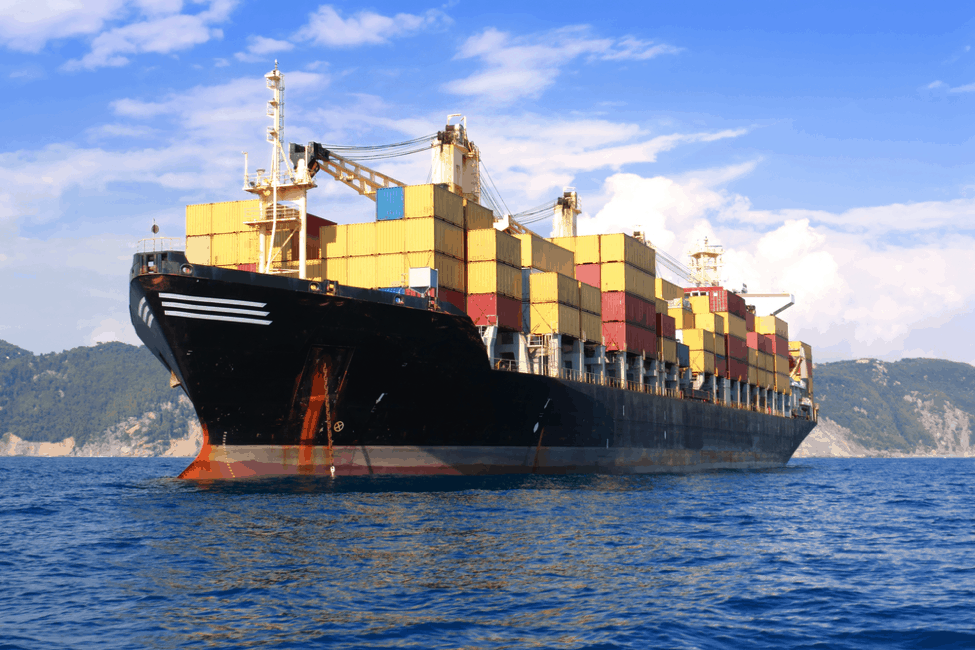Are Freight Rate Indices & Carrier Fees Useless?
Mike Wackett wrote an article in the Loadstar that might make shippers consider ocean freight spot rate indices and the fees ocean freight carriers have been charging to guarantee service as trivial things. Despite paying hefty fees to avoid it, shippers have seen their cargo rolled to later sailings with additional fees thrown at them in the process while carriers have quoted spot freight rates far higher than any rate index listed as the concurrent rates.

Let’s start with the freight rates.
Are These Freight Rates for Real?
Wackett reports:
Short-term freight rates from China to North Europe have breached the $20,000 per 40ft mark, while transpacific carriers are quoting rates of up to $25,000 to the US west coast.
And there was one report of $32,000 from Shanghai to Los Angeles being quoted this week.
While $25,000 per FEU from China to the U.S. West Coast is an incredible number, $32,000 is outrageous. However, there is a caveat to the latter amount. Yes, it was an actual quote given, but it was apparently given with the intention of making the shipper go away, according to Wackett’s article:
… Craig Grossgart, SVP of global ocean at Seko Logistics, confirmed to The Loadstar that one shipper had been quoted $32,000 this week for the shipment of a 40ft container from Shanghai to Los Angeles.
“To be honest, I think it was a polite way of the carrier saying to the customer it doesn’t want to take its business,” said Mr Grossgart.
There is something to be said about how much ocean freight carriers have been making – billions of dollars – that they can make outrageous quotes above the already sky-high freight rates to get rid of customers. However, we don’t know the circumstances around this particular shipment or shipper to know why the carrier didn’t want to take on the cargo, assuming Grossgart’s conjecture that the high quote was given intentionally to push away the customer.
If the $32,000 freight rate wasn’t actually a good faith quote, don’t automatically think the same about the $25,000 per FEU. Grossgart made it clear to the Loadstar that the $25,000 amount was for real:
Nevertheless, he said a figure of $25,000 per 40ft had been quoted to a shipper that needed to move 300 containers from Shanghai and Yantian to Los Angeles next month – “and that is a serious offer”.
Something that makes this $25,000 amount especially egregious is that it’s on a bulk shipment. Normally, when shipping hundreds of containers like this, the shipper could expect to get a break on the rate per container. Granted, probably not as big a drop as $32,000 down to $25,000. However, we normally wouldn’t be talking about freight rate numbers this large in the first place.
What’s the Point of a Freight Rate Index?
There is a major problem here. Shippers have no idea how high what they have to pay on cargo is going to be. What carriers are charging, especially once they add all their fees to the amount, is much larger than what the rate indices would indicate. Wackett’s article points out how the gap between spot market indices and what shippers are actually paying is widening by the week:
For example, the North Europe component of today’s Freightos Baltic Index stood at $11,006 per 40ft, while the FBX reading for the US west coast was $6,588.
How do you go from a U.S. West Coast rate index of $6,588 to $25,000, let alone the outlandish $32,000 figure?
That $6,588 isn’t some low outlying number to make this gap seem more dramatic either. If you read Universal Cargo’s last blog post, you would have seen other indices quoted from an American Shipper article with even lower Asia to West Coast freight rates:
Drewry’s latest weekly rate for Shanghai-Los Angeles was $6,358 per FEU, up 197% y/y. S&P Global Platts’ daily North Asia-West Coast FAK assessment for June 22 was $5,800 per FEU.
Carriers charging shippers three to four times what a rate index says for importing or exporting goods makes those indices almost unusable for shippers. Maybe the indices will tell shippers what direction rates are trending in, but with the kinds of gaps we’re seeing, the indices give shippers little indication of what they’ll actually be paying.
Carrier Fees with No Guarantees
For the last year, freight rates have been out of control while carrier reliability has basically been an oxymoron. On top of record shattering freight rates, carriers have piled on the fees. About a year ago, I called carriers out for implementing no-roll premiums, calling these fees, especially when they were being assessed after carriers had blanked (cancelled) hundreds of sailings, tantamount to holding cargo for ransom.
Even when shippers pay these outrageous fees, it hasn’t always prevented carriers from rolling the cargo and charging shippers additional fees at the same time.
The Loadstar article highlights this problem:
Although these massively elevated rates include a premium fee, to guarantee equipment and space, some shippers complain that their cargo is still getting rolled.
“We paid their ridiculous charges and thought that was the end of it,” said one forwarder, “but then we found out from our local agent that the boxes were still on the quay and the line wanted more to ship the cargo.
“Apparently, there was another FAK hike from the next vessel which they insisted on charging, which means their so-called premium fees are worth nothing,” he added.
Is This Sustainable for Carriers?
We could very well be nearing the end of the shipping boom that’s been taking place for the last year. Inflation issues in the U.S., which are only made worse by these high freight rates, could cut into consumer spending. Spending certainly won’t end altogether, but the dollar is not going as far as it did and things are opening up more and more, causing entertainment, travel, and services to cut in on spending on goods. Holiday shopping is not far away, and international shipping is in peak season now preparing for that. However, a significant drop in international shipping demand should probably be expected to come right around the corner.
Carriers will do their best to utilize the control over capacity they’ve gained to push supply low through blanked sailings again and keep freight rates up when demand does drop. Carriers proved themselves quite capable of dropping capacity below a dip in market demand in the early parts of 2020. However, with the huge freight rate numbers we’ve been seeing, it seems carriers turned to price gouging over the last year. How long can they be expected to maintain high rates with lagging service and demand that could be on the edge of falling? That’s something we’ll look at in future blogs.




